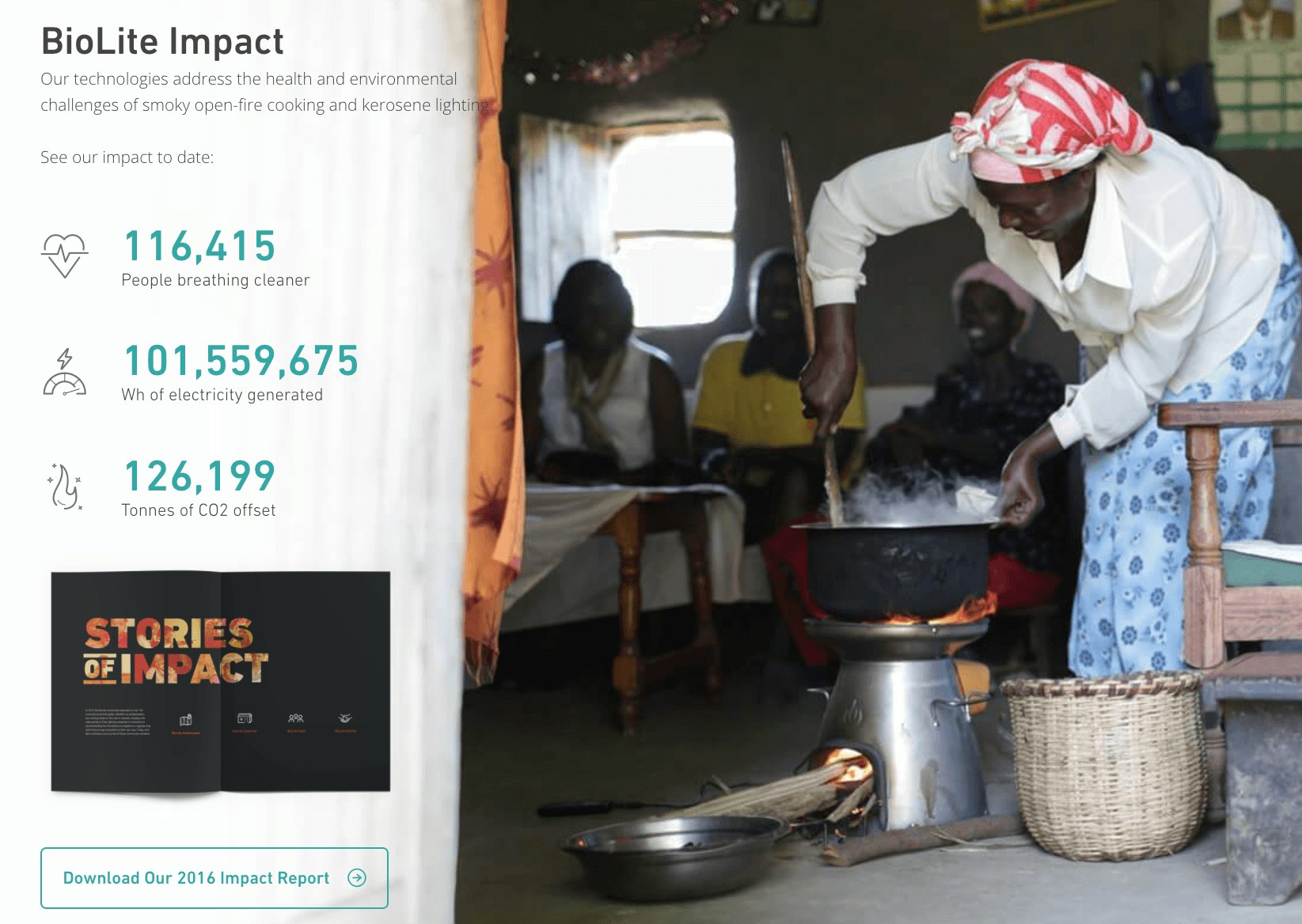For online store owners, social has a specific meaning. Social means Facebook. It means Instagram, Twitter, and, if you’re being generous, Google Plus.
But there is another type of social that can drive growth at your online store — social responsibility.
As conscious consumerism continues to gain steam, making social responsibility part of your company DNA — and letting people know about it with social responsibility marketing — is an awesome way to distinguish your store. Even if your niche is saturated. Even if your prices are as low as they can go.
“Today’s consumers (especially the millennial generation) are more conscious about what brands they support and buy from,” Jeff Sheldon, founder of modern design store Ugmonk, wrote via email.
“I wouldn’t say that the ‘giving back’ part of Ugmonk is why most people buy our products, but I think it does contribute to people resonating with what Ugmonk is all about.”
Ugmonk is indeed all about giving back: Sheldon said the company has donated more than 82,000 meals to needy children in Honduras and Nicaragua.
Ugmonk isn’t alone. Faucet Face, a store that sells glass water bottles, has also seen how much consumers appreciate social responsibility.
“To put in simply, it’s our biggest differentiator and what sets our brand apart,” Woody Kassin, owner of glass water bottle store Faucet Face, wrote of his social responsibility efforts. “We’ve received countless testimonials and feedback from customers that have described this feature of our business as the most important aspect of why they love our brand and products and are so happy to spread the word about what we do.”
Ugmonk and Faucet Face are just two online stores putting socially responsible actions — and socially responsible marketing — front and center. This post will look at seven beautiful examples of social responsibility in ecommerce, and then wrap up with some social responsibility marketing best practices.
Post Contents
- Conscious Consumers Dig Social Responsibility
- 1. Ugmonk
- 2. Taylor Stitch
- 3. Harper Wilde
- 4. Faucet Face
- 5. Allbirds
- 6. BioLite
- 7. Death Wish Coffee
- Authenticity Matters
- Social Responsibility Marketing Works for Any Sector
- Don’t Do Social Responsibility in the Dark
- Conclusions on Marketing Social Responsibility
Conscious Consumers Dig Social Responsibility
Before we get to the examples, let’s quickly give some context for what social responsibility marketing is all about.
Whether you have your own online store or are in the process of launching one, chances are that you don’t own the market. Which means you’ll need some way to set yourself apart from the crowd.
Enter social responsibility, which has emerged as a important selling point across numerous sectors. For instance, in Nielsen’s 2015 Global Corporate Sustainability Report, 66% of respondents said they are willing to pay more for products from companies whose values align with their own.
Data from Forrester shows that values factor into the purchasing decisions of more than half of US shoppers: “Today’s empowered consumers not only reject corporate irresponsibility but also seek brands that proactively promote beliefs and values aligned with their own.”
And as Sheldon mentioned, this tendency is even stronger among ecommerce’s most important demographic — Millennials. Nielsen’s data shows that nearly three-quarters of Millennial consumers are willing to pay more for sustainable goods.
Okay, so we know that there is business value in social responsibility. Now let’s look at how seven ecommerce stores around the web are implementing — and marketing — their own social responsibility efforts.
1. Ugmonk
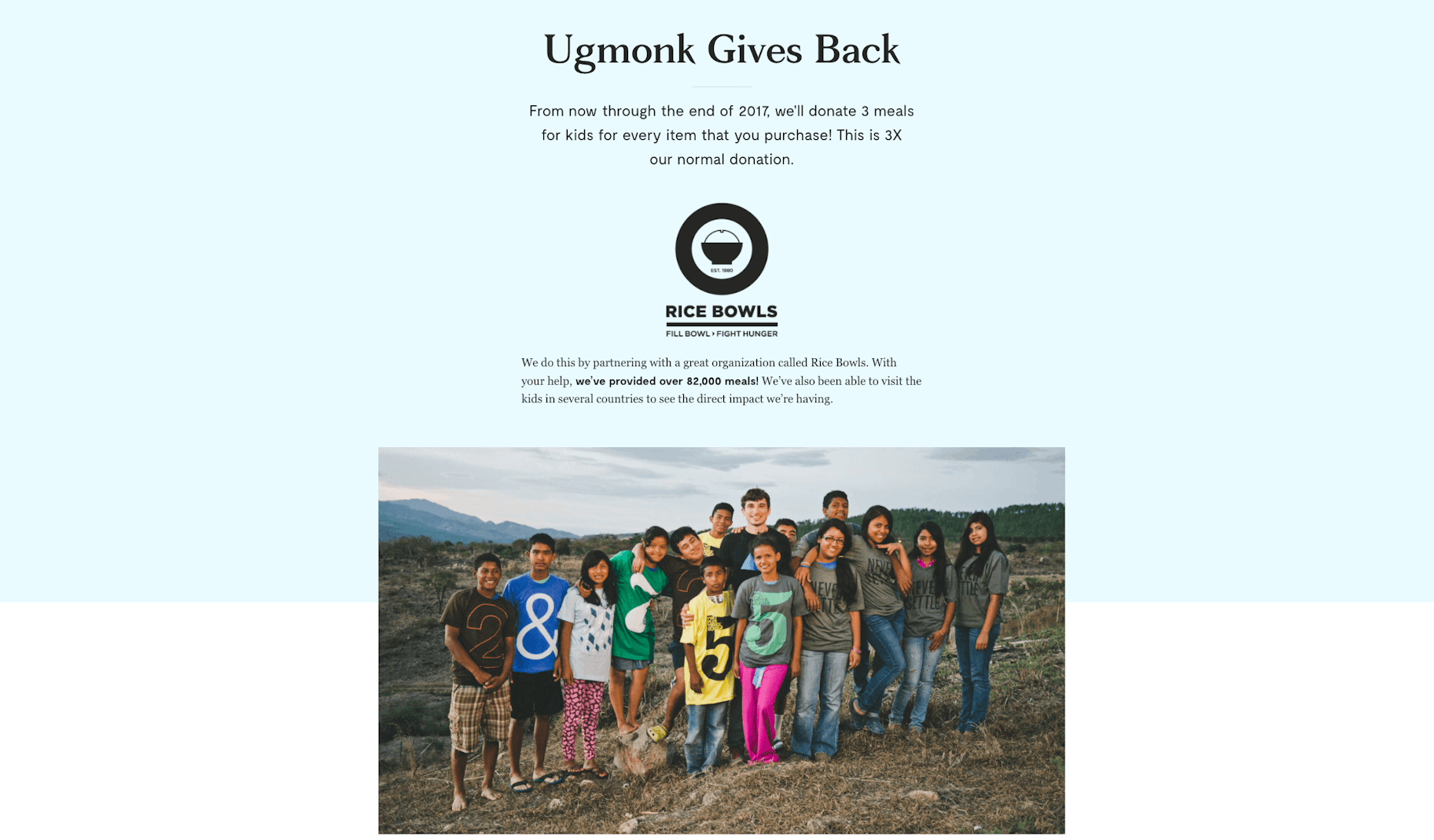

If you click Read more here, you land on a beautiful, picture-filled page that places Sheldon on the ground with the children that his website is helping to feed.
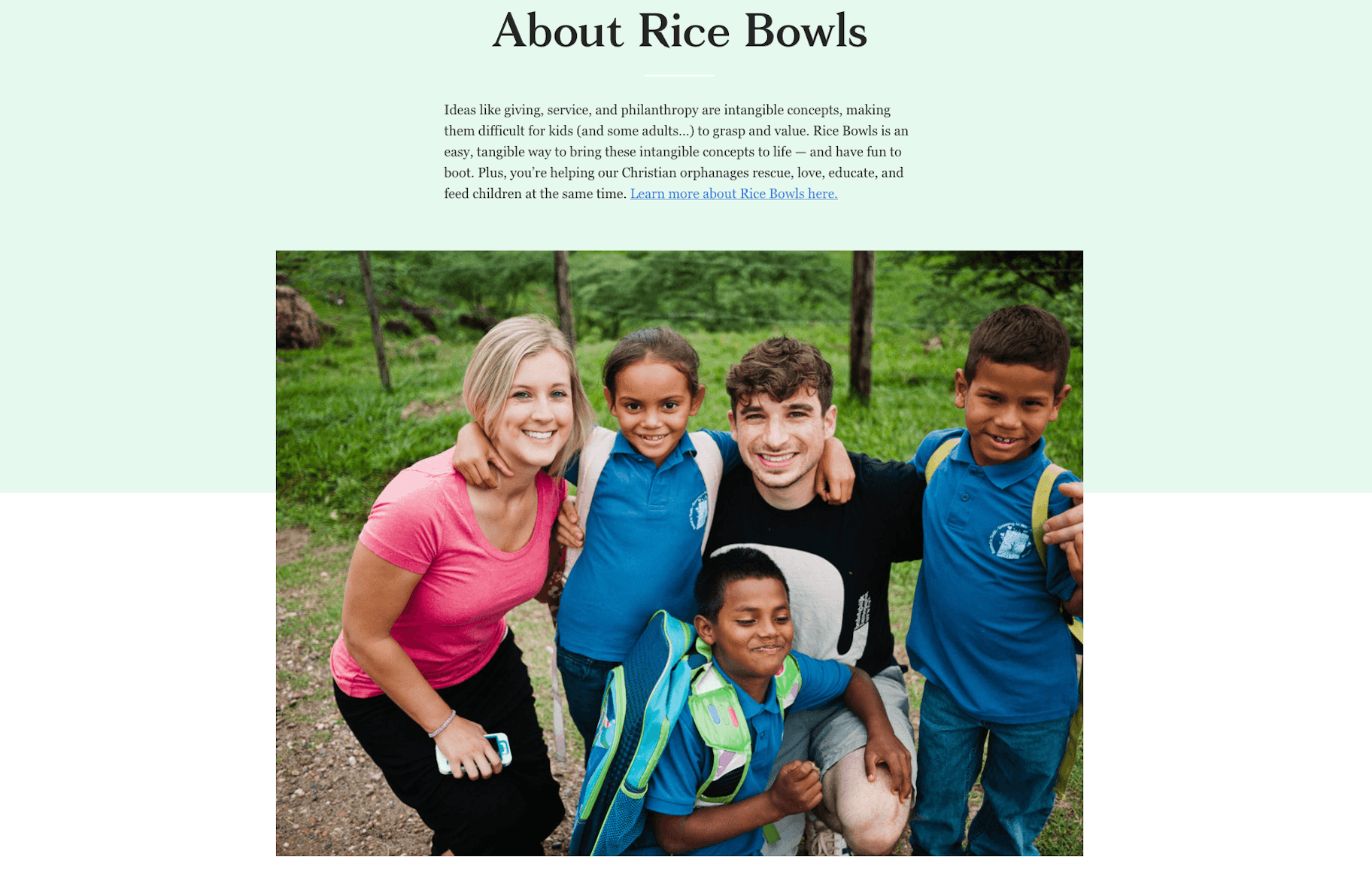
“We’ve received lots of great feedback from customers about our charity efforts,” Sheldon explained. “People like to know that part of their purchase is going to a good cause so it’s a win-win for everyone. It’s been fun to see so many of our customers embrace the cause and give very generous donations during our charity drives.”
2. Taylor Stitch
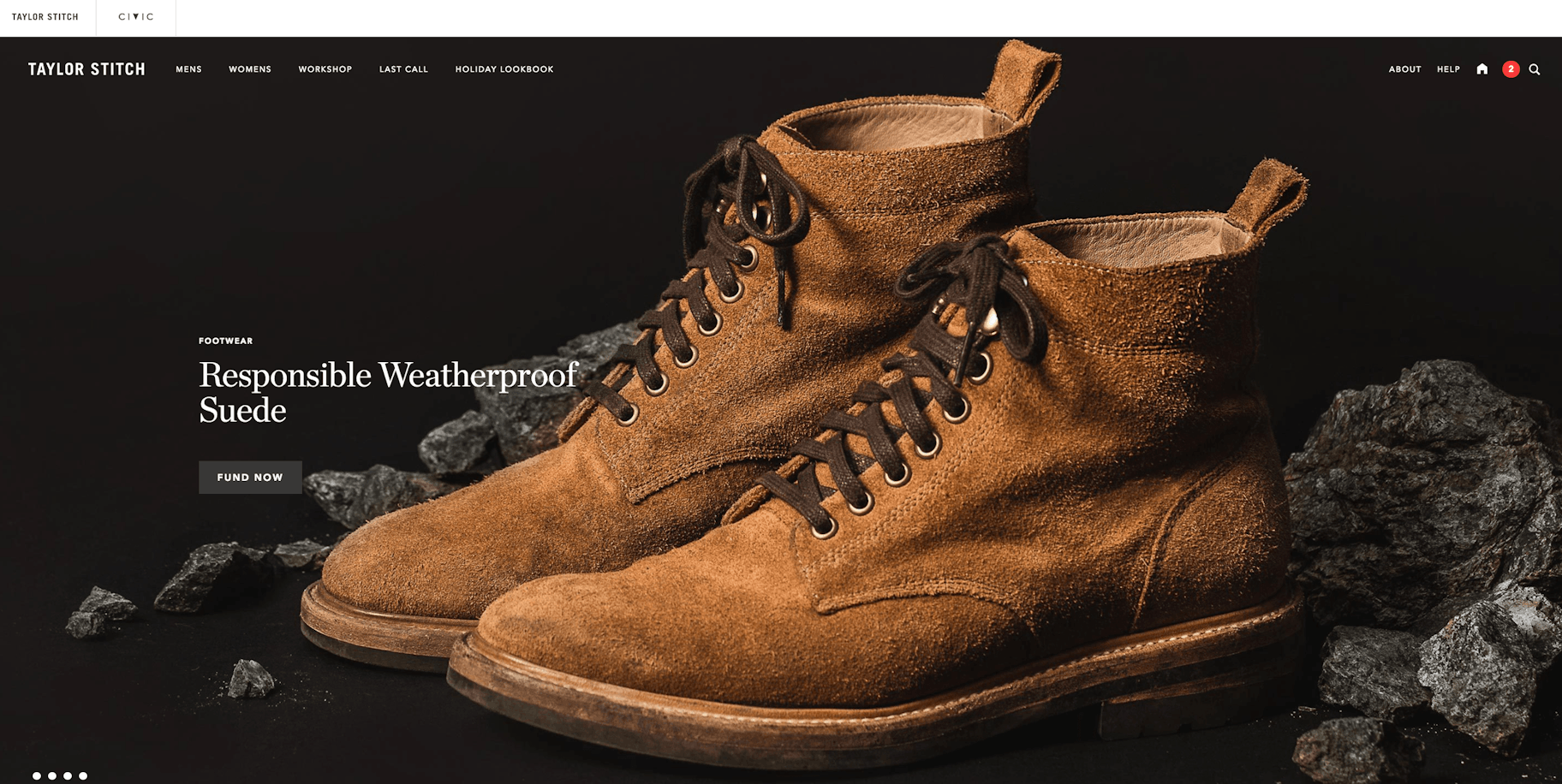
A massive image of high-end suede shoes greets you upon arrival at Taylor Stitch. And instead of a Buy now! or Add to cart button, you are invited to Fund now. It’s a slight adaptation from the norm, and it succeeds in jolting a shopper into realizing that this isn’t a typical clothing store.
Social responsibility messaging pops up throughout the site. Here, for example, Taylor Stitch tastefully weaves together the idea that its clothes last a long time with the idea that its clothes are sustainably sourced. The copy, the message, even the disappearing highway — all of it reinforces social responsibility marketing:
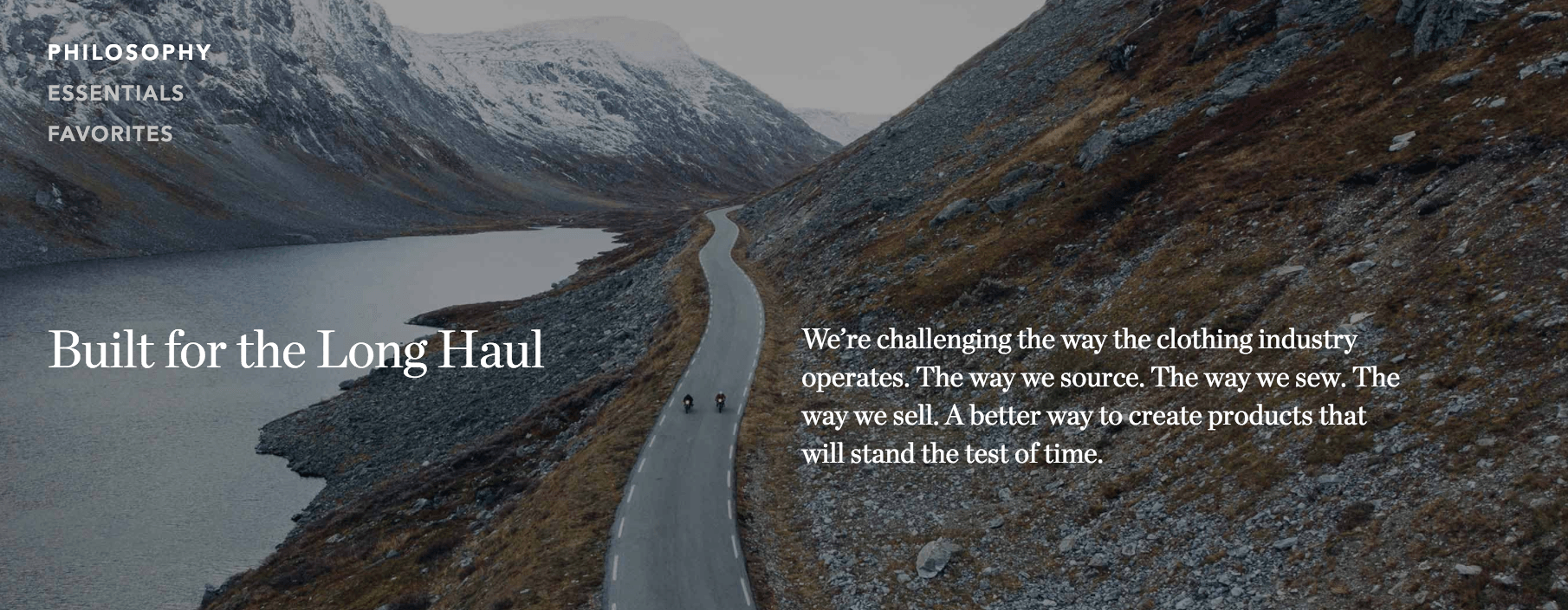
There are additional references to sustainability…
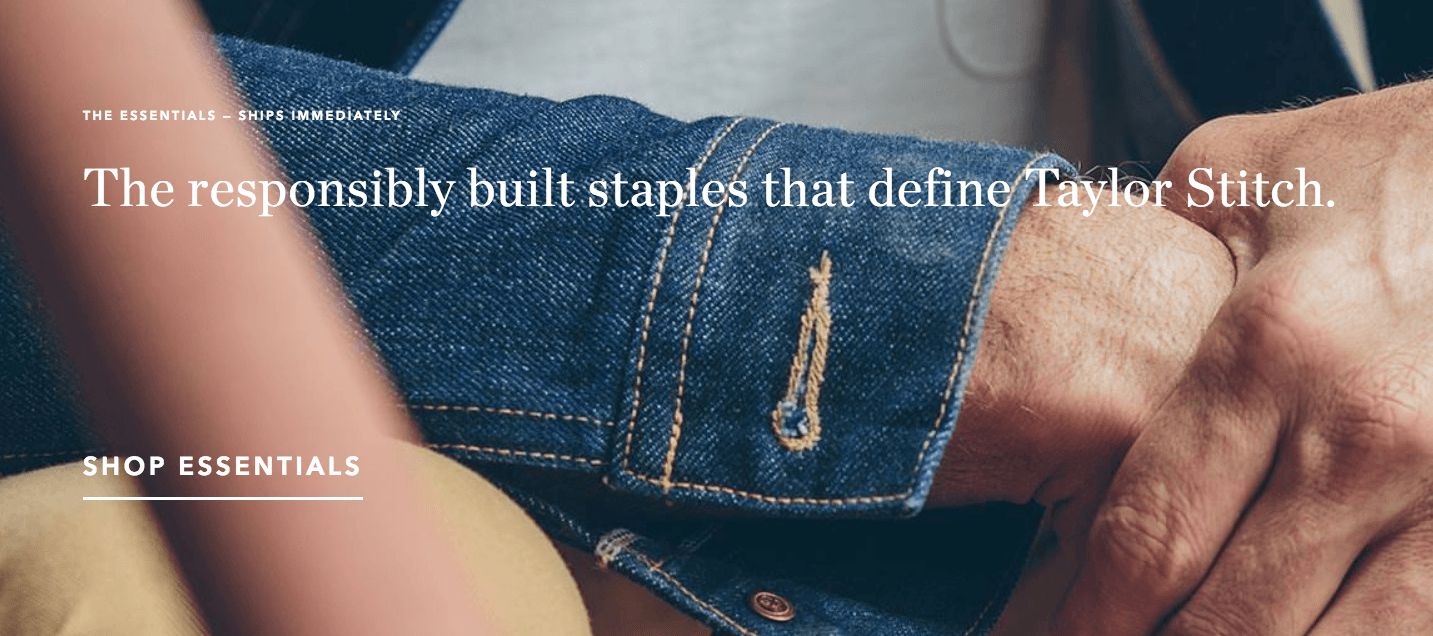
… as well as straightforward FAQs…

3. Harper Wilde
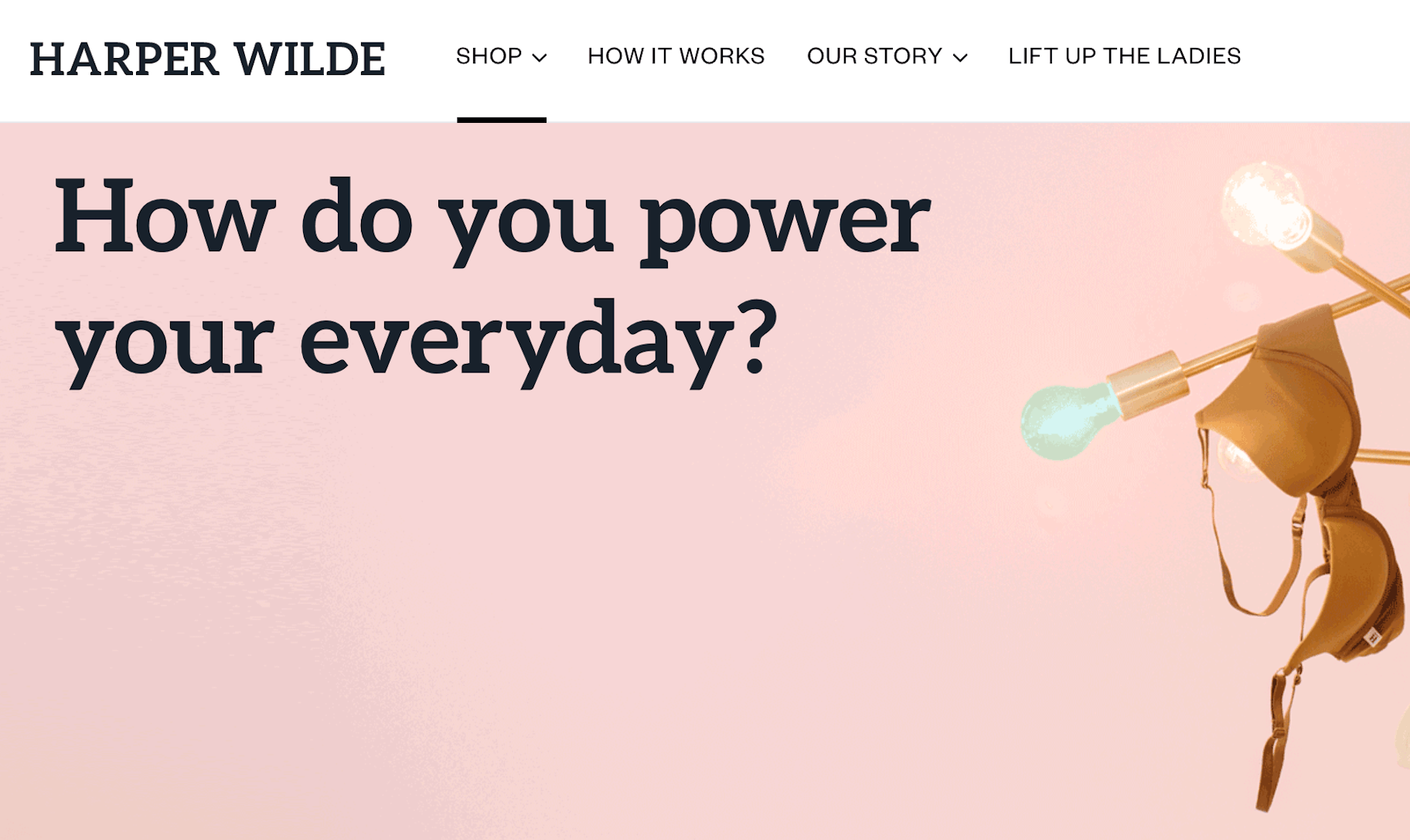
Harper Wilde, which sells bras, is on the shortlist of stores that do an awesome job marketing their social responsibility — in newsletters, on the website, through copy.
Of course, it’s not just marketing.
“What’s important to realize is that any brand can grab a social impact partner and claim to be ‘doing good,’” Harper Wilde Co-Founder Jenna Kerner wrote.
“What’s harder is to fully weave that mission and value into a brand at the core. When you create that alignment across the entire brand and customer experience is when you have created a positive feedback loop which then further emphasizes your values to continue to do well.”
Harper Wilde has definitely succeeded in creating that alignment. For starters, their charitable work focuses on women — just like the product. And the tagline they use for their charitable efforts is Lift up the ladies. Get it?
“Customers love our Lift Up The Ladies mission (and messaging!),” Kerner explained. “So even for the more serious angle of our business, we tried to incorporate humor, relatability, and authenticity so that it felt fully integrated with the brand and the shopping experience. This has resonated really well with our community.”
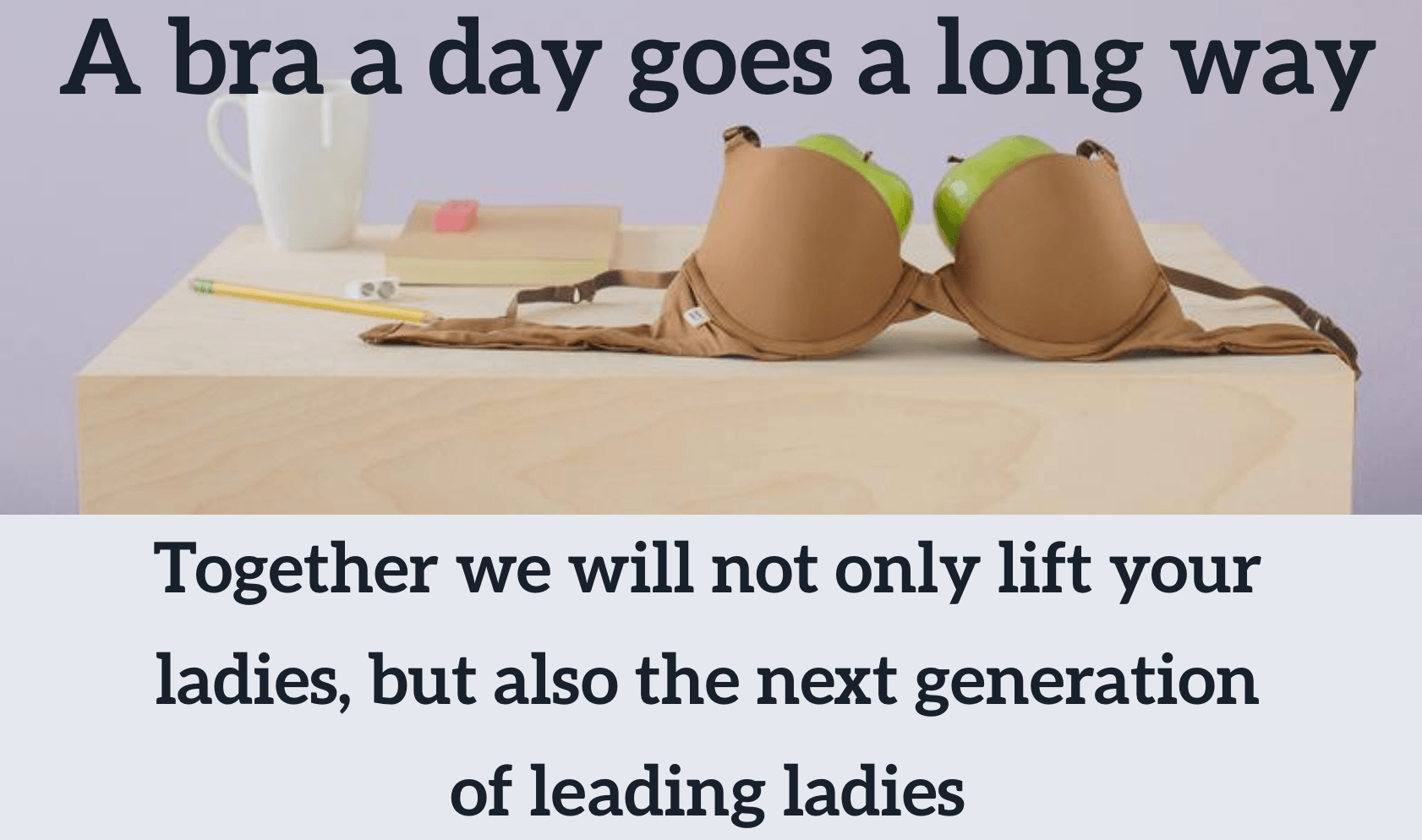
In addition to the charming social responsibility messaging, Harper Wilde works with a manufacturer whose workforce is 75% women. They have also partnered with Glamour Magazine’s The Girl Project, which provides access to education in more than 100 countries. Choosing a partner was not something that Harper Wilde took lightly: “We spent nearly as long vetting a social impact partner as we did building this company.”
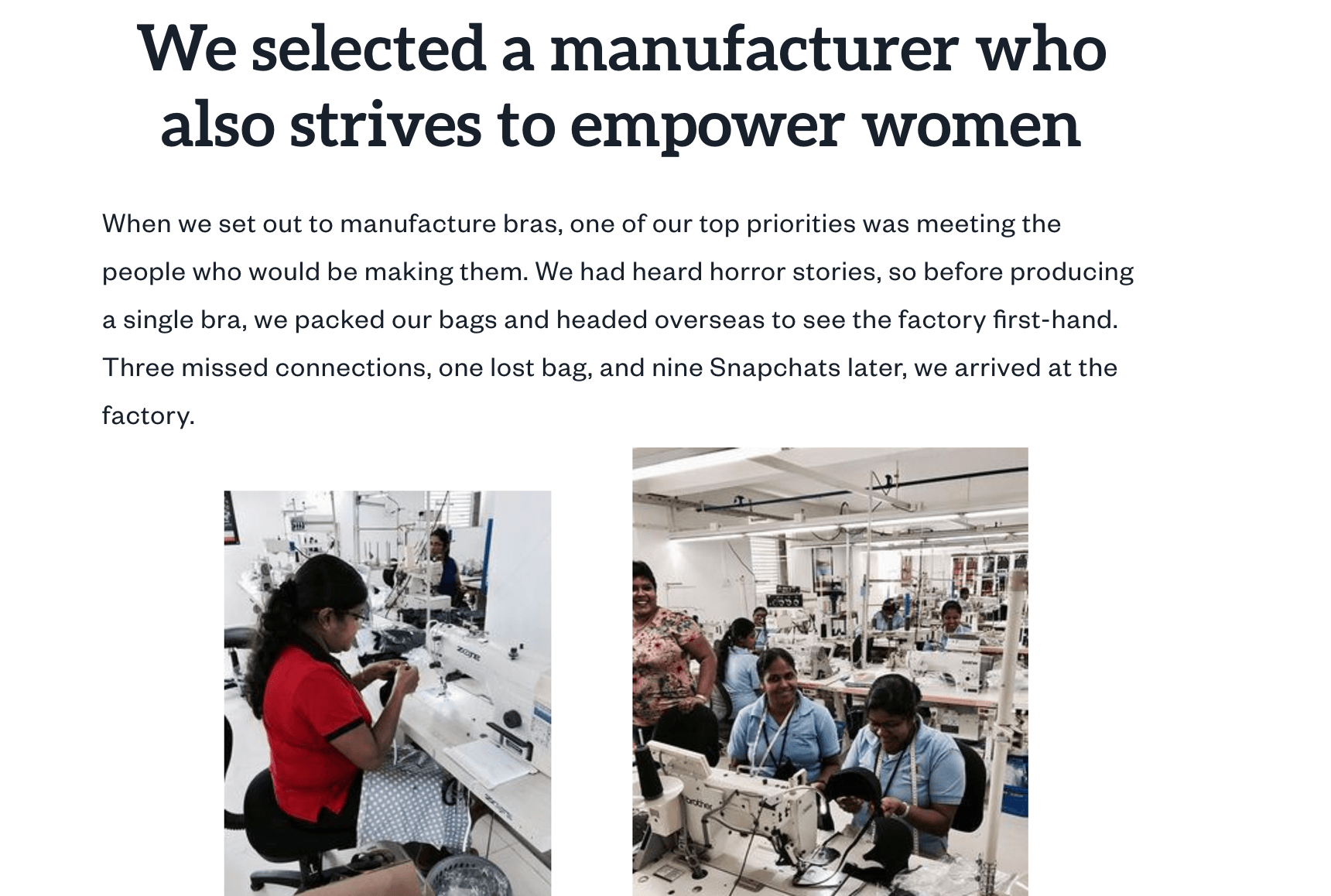
Even the company’s name is rooted in its values of empowerment and education: a combination of renowned female authors Harper Lee (To Kill a Mockingbird) and Laura Ingalls Wilder (Little House on the Prairie).
The result? “We do see strong brand affinity for the Harper Wilde brand,” Kerner wrote, “from customers, influencers, brand partners, etc.”
4. Faucet Face
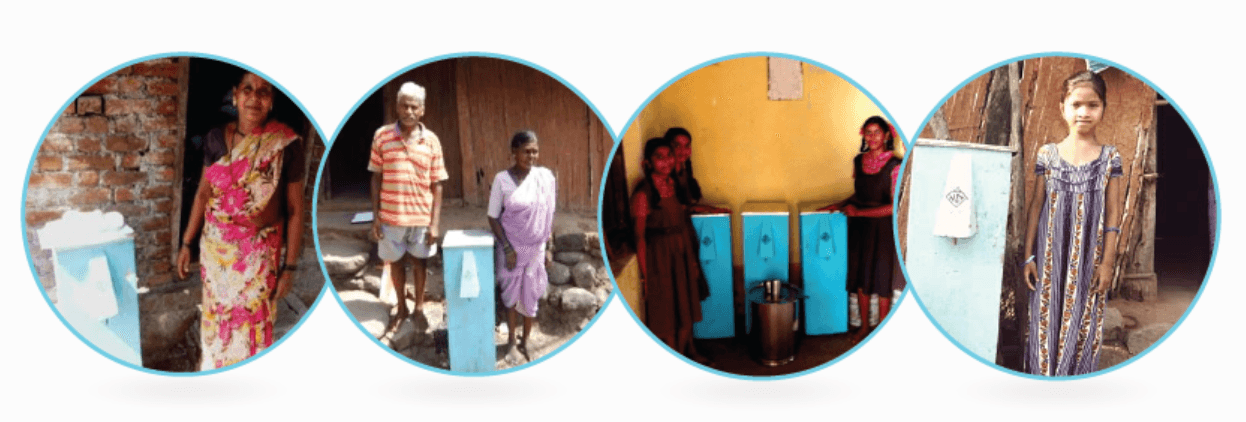
Faucet Face is an online store that sells glass water bottles. Social responsibility is baked into the site and the company itself.
As Kassin explained it: “I ventured out on my own about 10 years ago, decided to become an entrepreneur and sought to build a business which evoked themes such as living a healthy lifestyle, environmental and eco-friendly causes, animal rights, and charitable work. These are the four main themes that our brand supports.”
Anyone who visits Faucet Face will immediately see that. The homepage features a plug for the “1 for 100” program, letting shoppers know that every bottle purchased provides families in India with at least 100 liters of clean water.
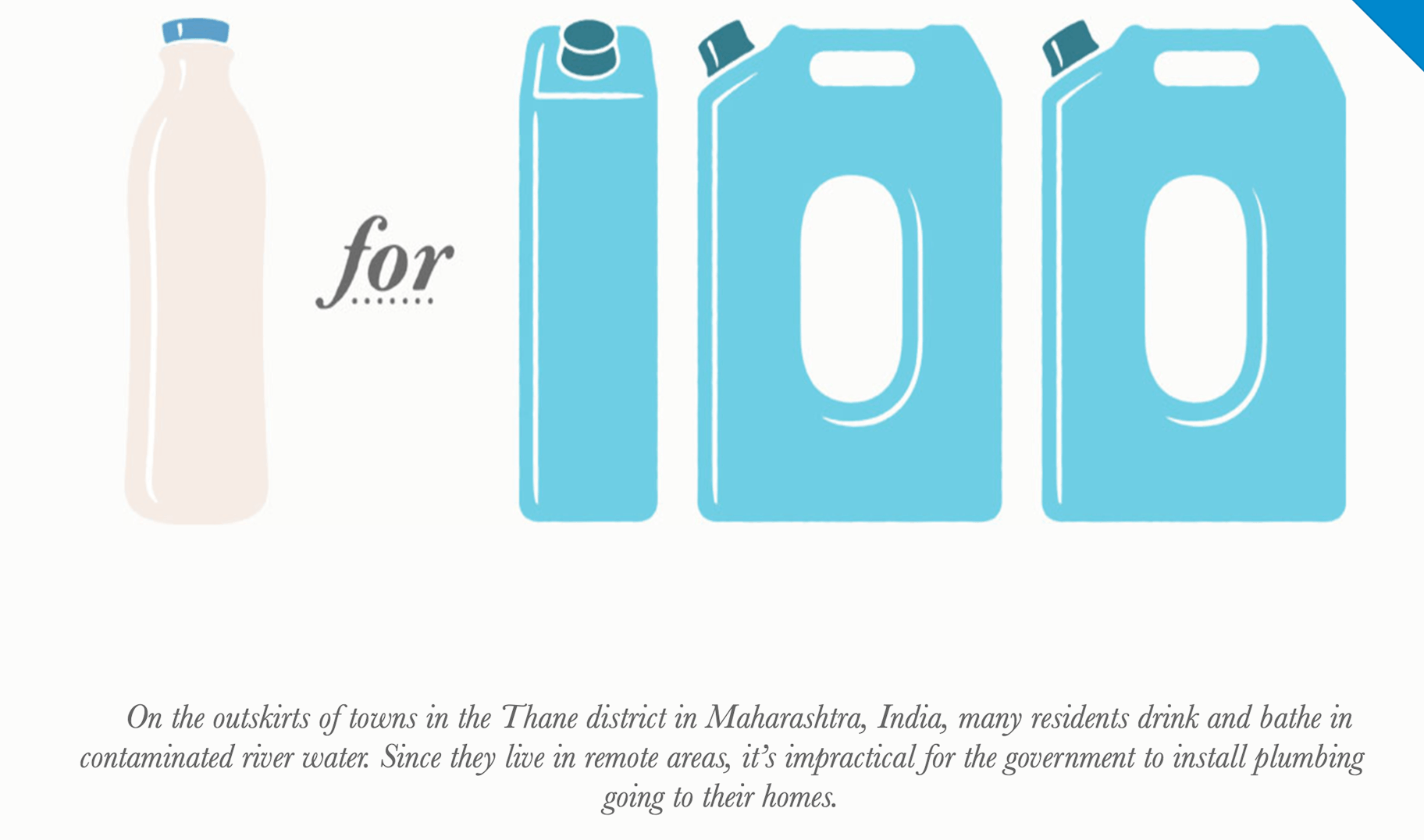
Even the browser page title is optimized for social responsibility:

“We believe our bottles are unique in terms of their functionality and design,” Kassin said. “However, the brand aspect of our business is the best way to drive engagement and loyalty to our brand in the long term.”
According to Kassin, social responsibility helps generate website and social visits, purchases, repeat purchases, word of mouth, brand building, and more: “Everything, the entire feedback loop.”
5. Allbirds
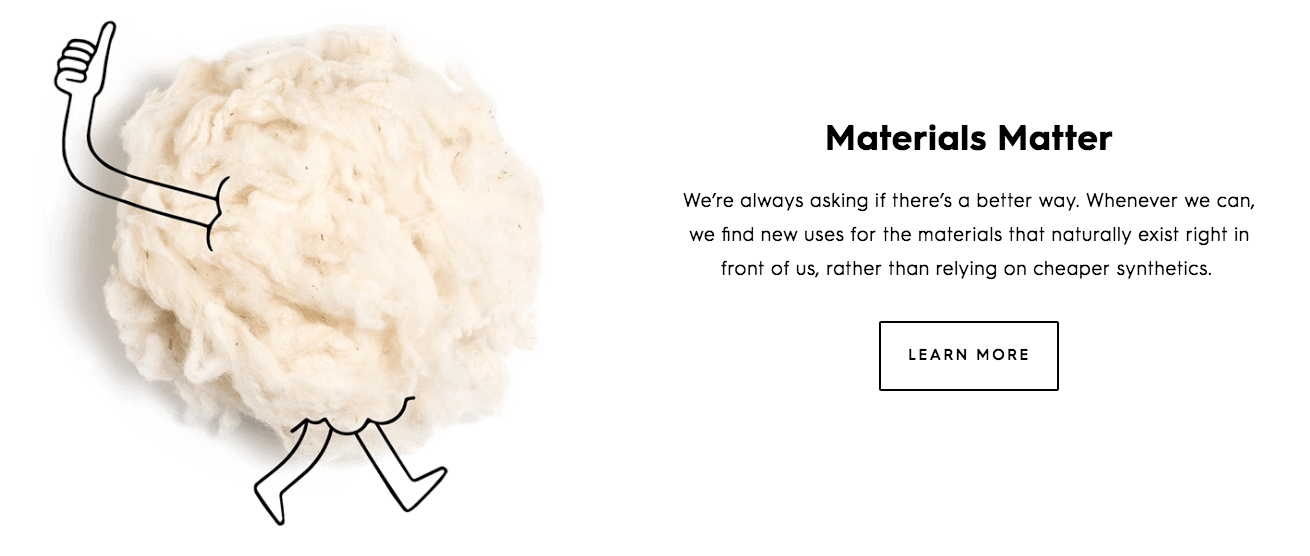
New Zealand-based Allbirds, which sells wool shoes, gets its social responsibility ideas in front of visitors quickly and comically.
The homepage has a picture of a charming piece of wool, with text that contains socially responsible phrasing like “naturally exist” (good) and “cheaper synthetics” (bad).
Clicking on the wool-ball link, you land on a page that contains all sorts of social responsibility marketing goodies. You can read about formal certifications, like this one that covers sustainability and animal welfare:
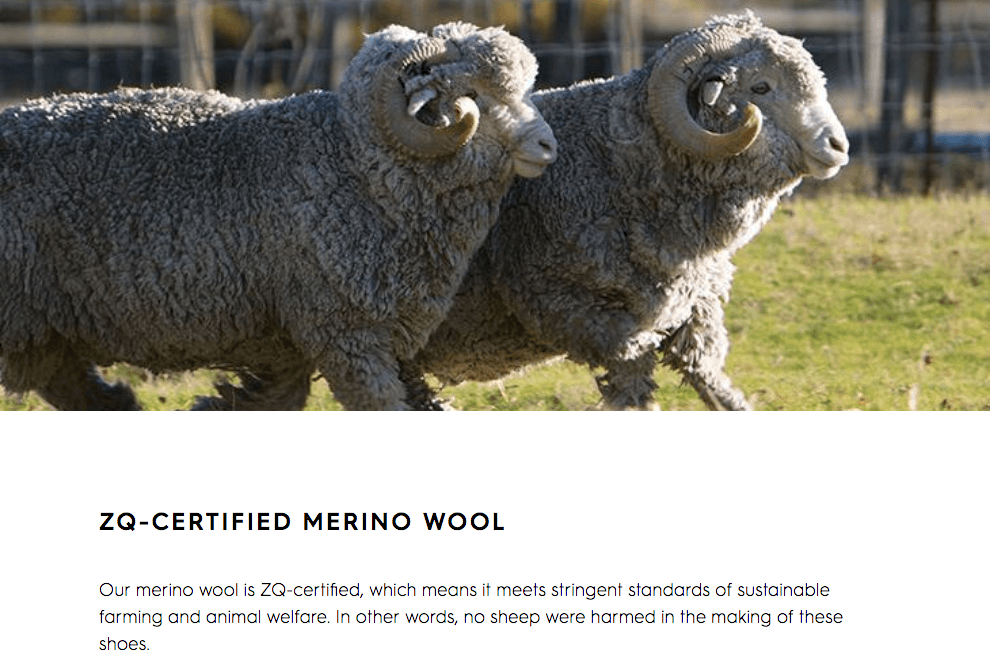
At the same time, Allbirds avoids being stuffy — see the cheeky note confirming that “no sheep were harmed in the making of these shoes.”
Allbirds’ social responsibility assault doesn’t stop there. There is a section about packaging, a section about B Corp certification, and a section about Allbirds’ partnership with Soles4Souls, a US-based group that donates shoes to those in need.
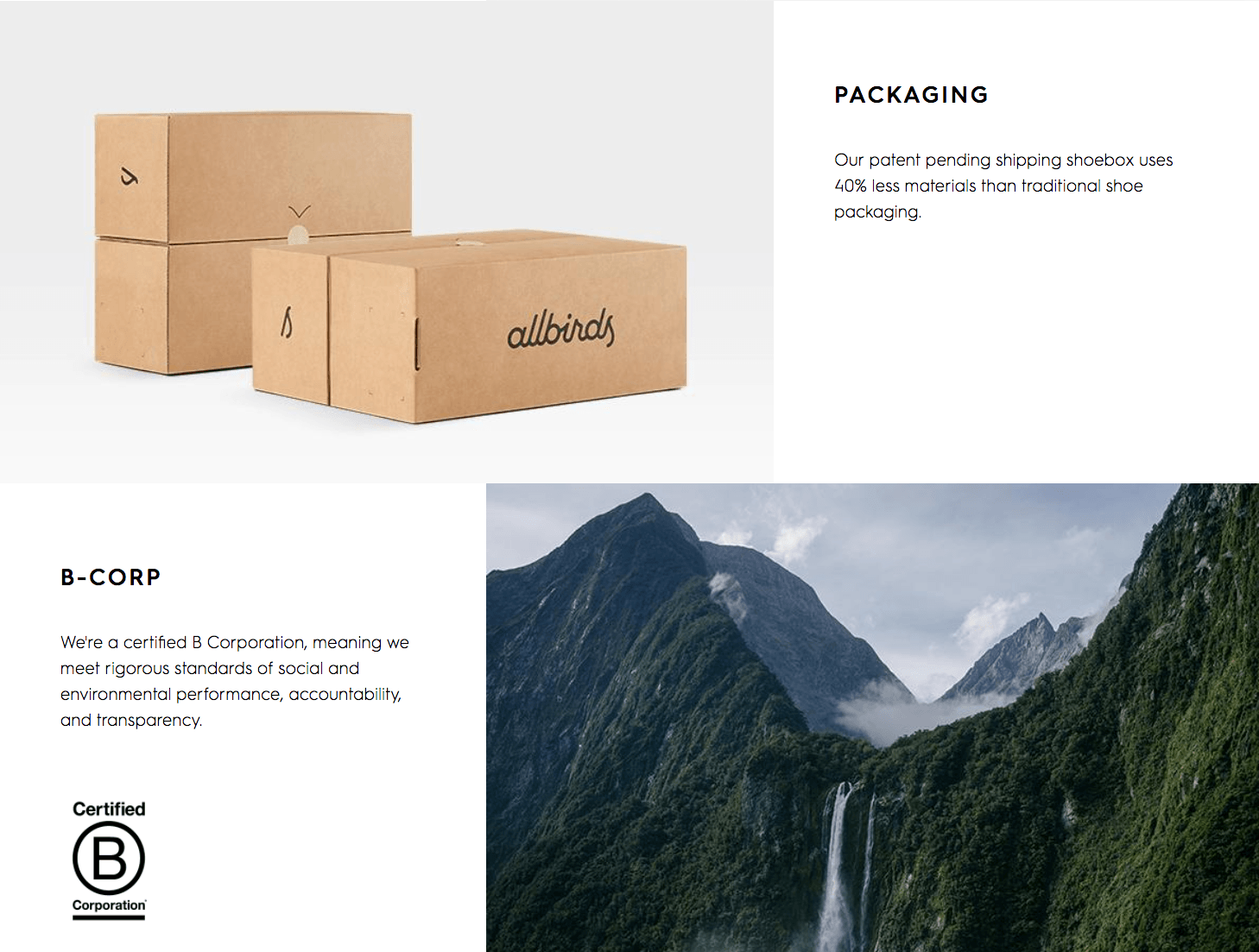
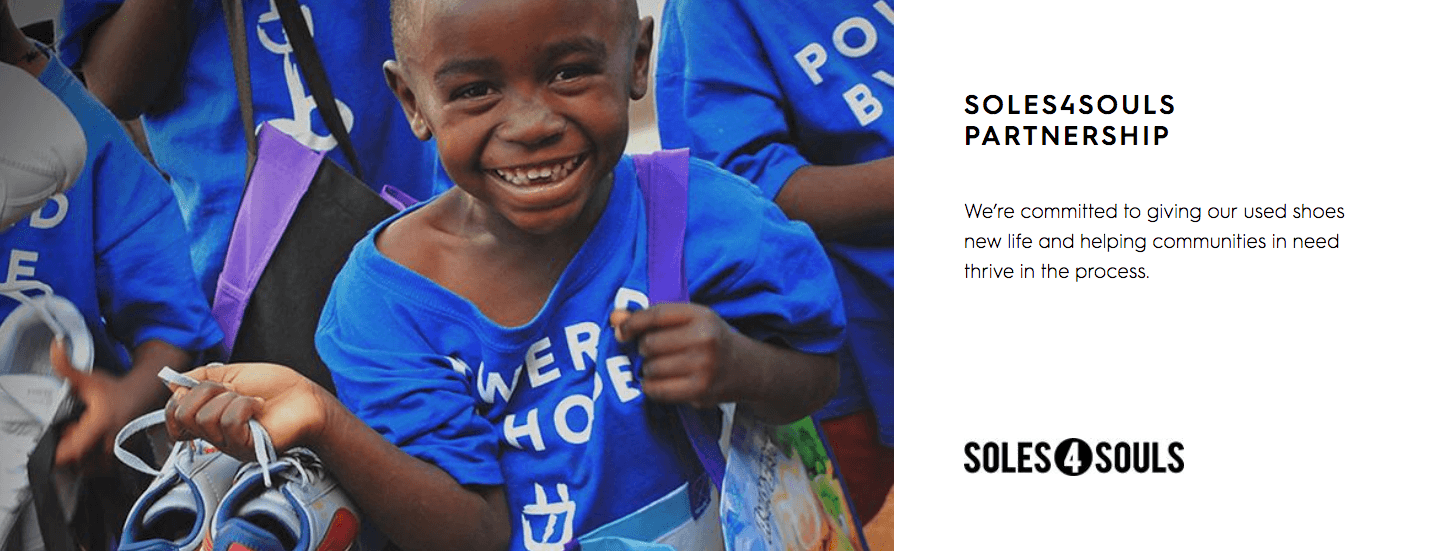
That’s multiple certifications, a shoe-donation program, and some cute animals. As far as social responsibility marketing goes, it’s a home run.
6. BioLite
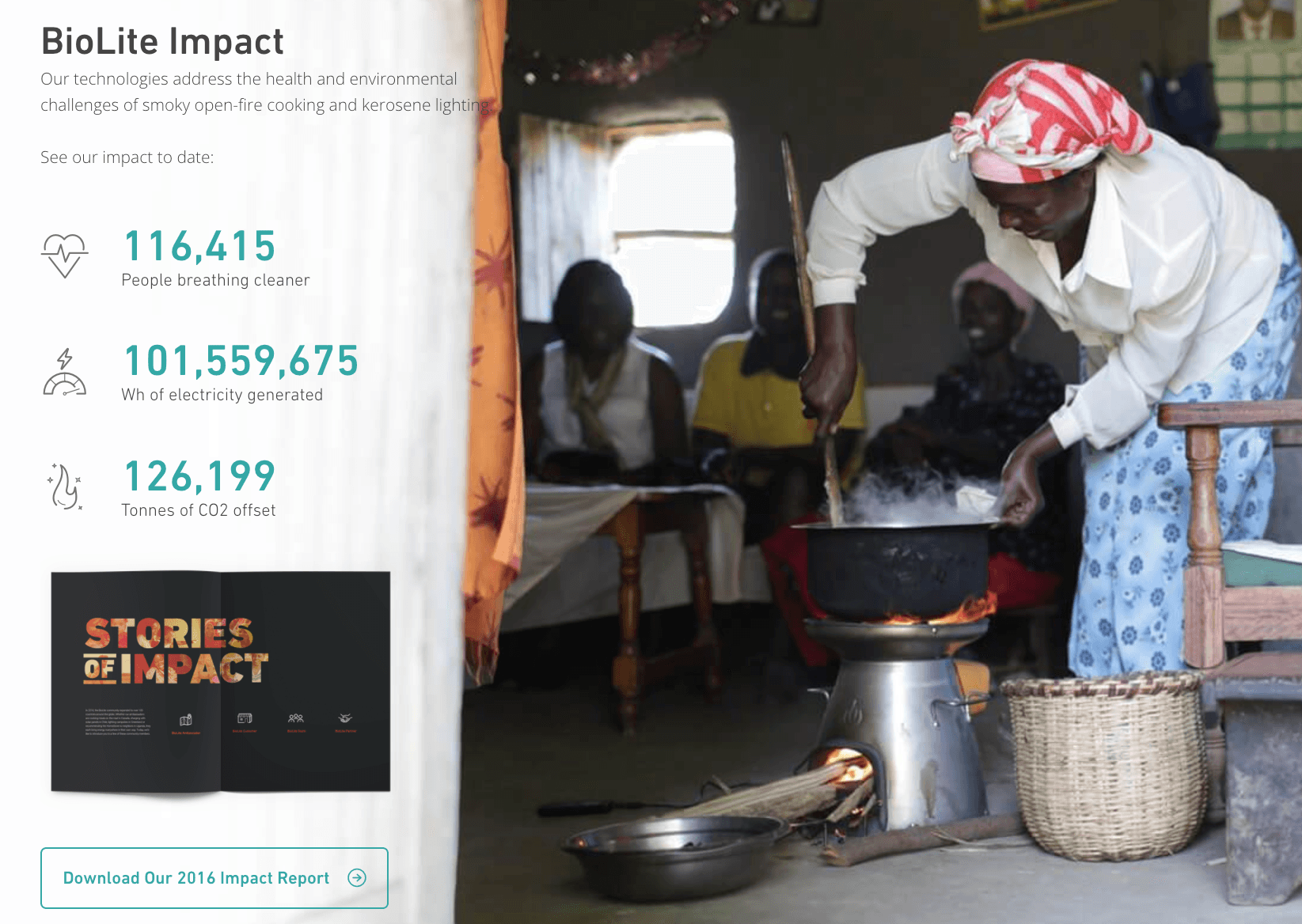
Outdoor supply outlet BioLite has loads of social responsibility content on its site. Some subtle, some overt, all of it solidifying the company’s push to provide energy to those in need.
The quieter social responsibility touches include the “carbon neutral” message tucked underneath the footer, as well as the “Global Impact” button attached to the side of the main menu.
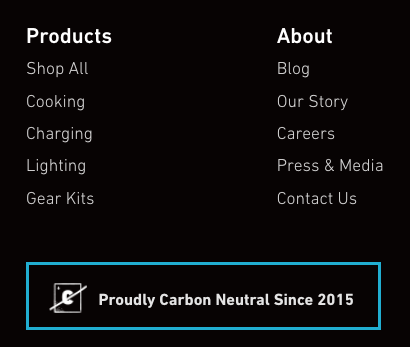
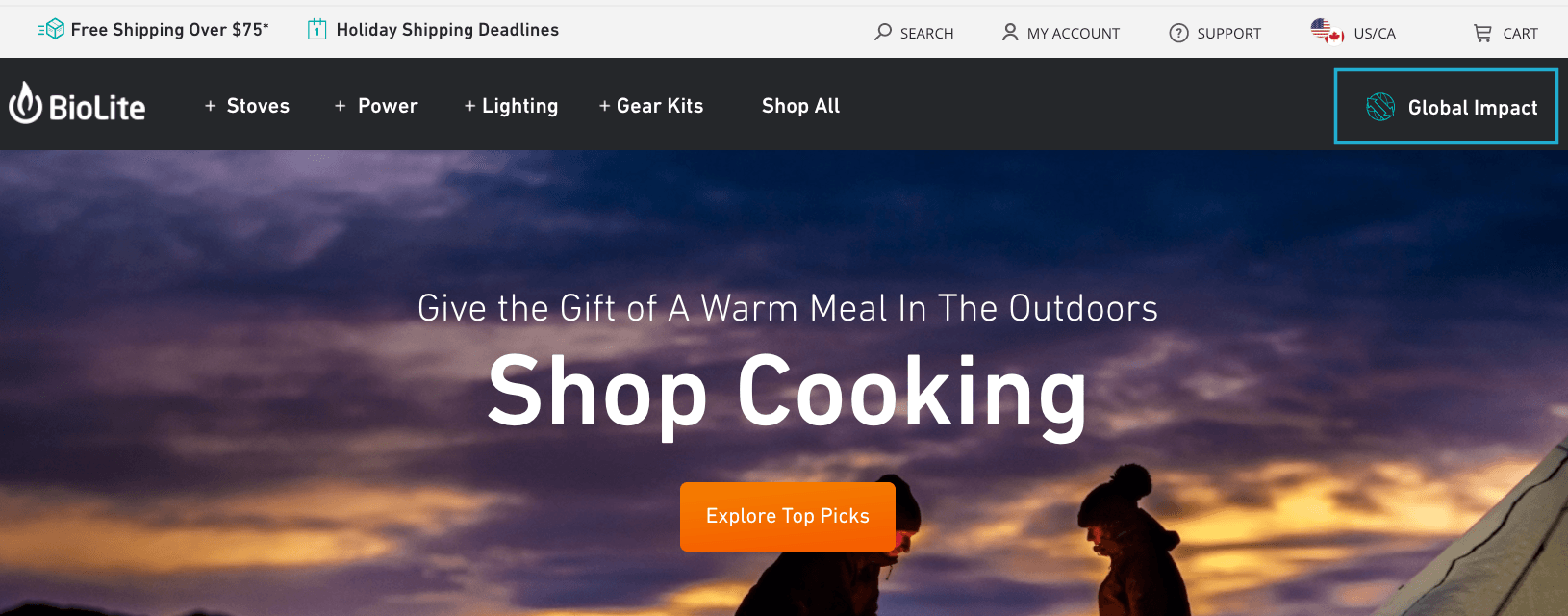
And of course the homepage tagline — “Give the Gift of A Warm Meal…” — has clear social responsibility connections while still functioning as a product promotion.
The socially responsible marketing is more in-depth elsewhere on BioLite’s website. If you scroll down on the homepage, for instance, you find this engaging pic, tagline, and slickly produced video about “The Power of Home,” BioLite’s push to provide clean energy around the world.
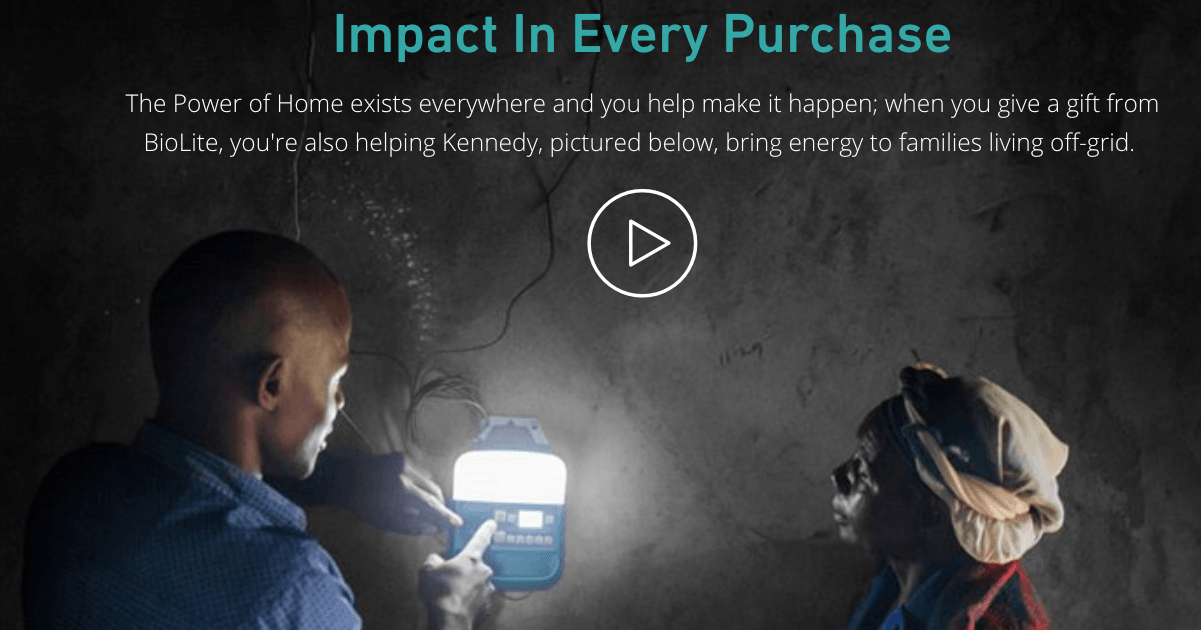
The video is not the only social responsibility marketing content BioLite offers. Massive images — along with a different, equally top-notch video — give life to the company’s “Mission” page.
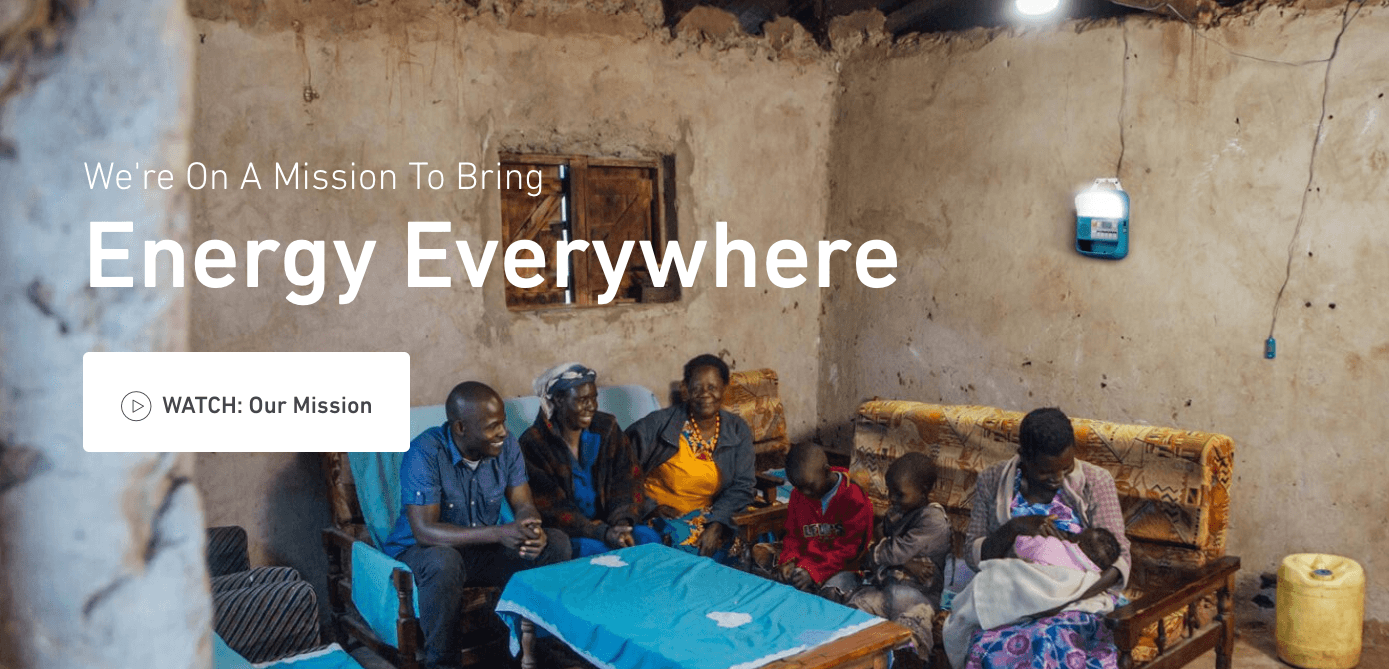
You’ll also find statistics, downloadable content and a 10-part series detailing how BioLite is walking the walk on social responsibility.
7. Death Wish Coffee
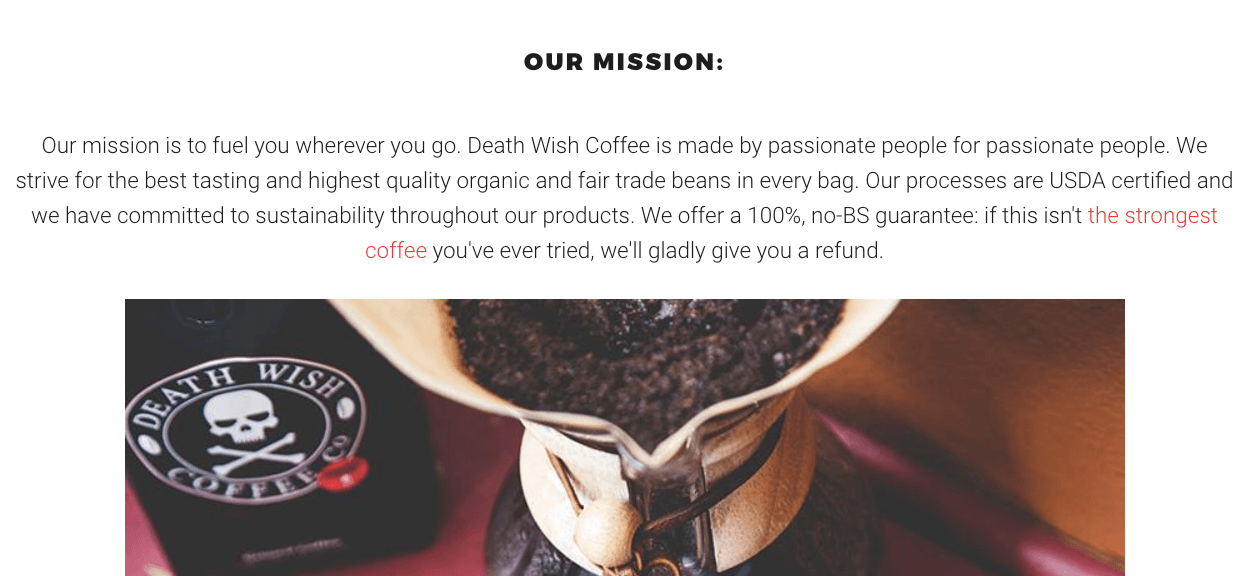
In addition to the “world’s strongest coffee,” Death Wish Coffee offers shoppers a socially responsible shopping experience.
They have content that touts their USDA Certified Organic credentials, along with the links to prove it. After looking at BioLite’s enchanting videos, these links are important: If you don’t have the marketing budget to produce videos about your social responsibility, you can still prove you’re serious by linking to external authorities. In this case, that’s the United States Department of Agriculture.
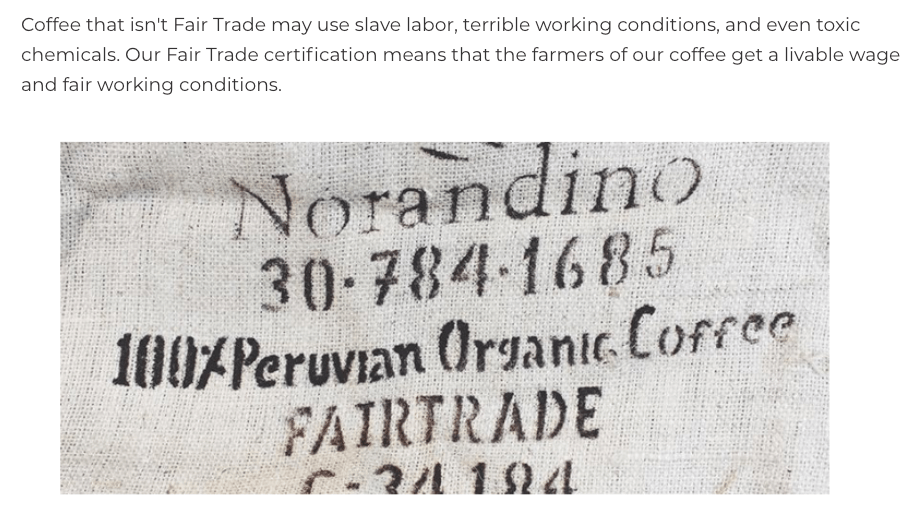
Death Wish offers a uniquely American twist on social responsibility: military appreciation. They offer 15% off for military members, along with a sincere “thank you for your services” message. This particular brand of social responsibility marketing won’t play everywhere, but in the US, where the company is based, military appreciation has been known to cultivate brand affinity.
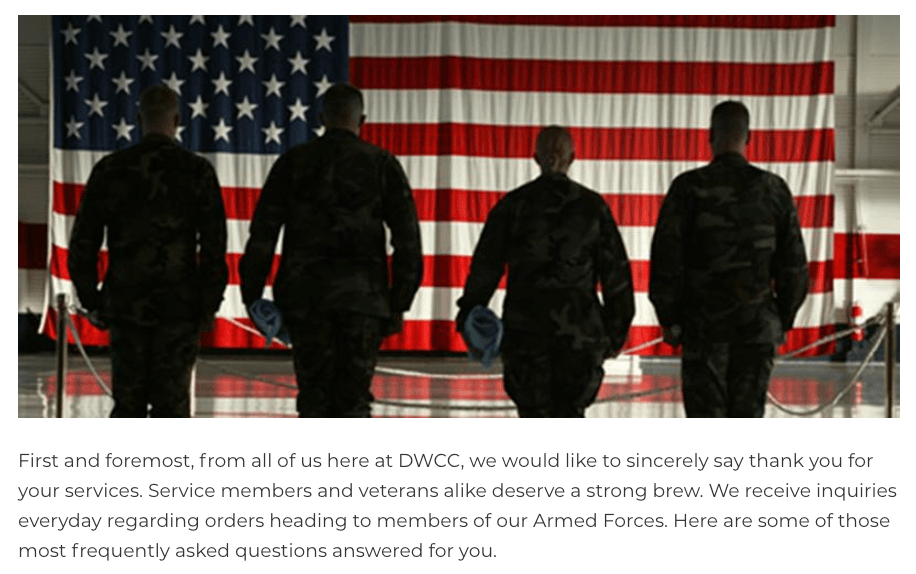
Authenticity Matters
So there we have seven beautiful examples of online stores doing awesome things with social responsibility marketing. Making a difference, and making sure that shoppers know about it.
What are some of the common themes that you can incorporate into your own socially responsible marketing?
First and foremost, authenticity matters when it comes to social responsibility. Remember those stats about how social responsibility can drive sales? Well, doing social responsibility marketing without actually, you know, being socially responsible will have the opposite effect.
According to the 2015 Conn Communications/Ebiquity Global CSR Study, 90% of consumers would stop buying a company’s products if they learned of “irresponsible or deceptive business practices.” It doesn’t get much more deceptive than bragging about donations that aren’t getting donated.
“People can usually tell when companies are adding a ‘social good’ component as a marketing ploy rather than a core part of the brand,” Sheldon said.
Deceptive social responsibility peaked with the 2015 Dieselgate story, when Volkswagen cheated on emissions standards tests back in 2015. The company’s share price dropped some 35% within days. Now, two-plus years later, it still hasn’t completely recovered.
In other words, don’t fake it.
Social Responsibility Marketing Works for Any Sector
In a single blog post we’ve covered socially responsible marketing from companies that sell designer apparel, coffee, camping gear, water bottles, and more. You don’t need to be a “do-good” company to find ways to be charitable.
There is, for example, no clear line between “bras” and “education.” But Harper Wilde makes it work by directing its charity efforts toward young girls, a twist that its shoppers — most of whom are presumably women — can identify with.
BioLite is also savvy with its social responsibility: The company specializes, among other things, in providing energy and electricity to campers. So why not also provide energy and electric to the less fortunate? Once again, a link has been cultivated between the cause and the consumer.
Don’t Do Social Responsibility in the Dark
The sectors, charities, and approaches of all these companies vary. But one constant is the clear, easy-to-find messaging around their social responsibility.
Look at all the different ways these companies engage in social responsibility marketing:
- Ugmonk has a banner streaking across the homepage and adorable pictures one click away
- Taylor Stitch has text that talks about sustainability and a picture of a highway evoking the future
- Harper Wilde has deft, masterfully crafted copy like “Lift up the girls”
- Faucet Face has obvious nods to social responsibility (like videos) alongside more subtle ones (like SEO-friendly social responsibility title tags)
- Allbirds has a series of credibility-building partnerships infused with lovely pictures of New Zealand nature
- BioLite has professional-quality movies (plural) and small touches such as carbon neutral certification
- Death Wish has a big ol’ American flag and military personnel on one page, and a rustic coffee bag with the words “fair trade” on the next
The point is that there are different ways to get your social responsibility message across without detracting from the user experience. Indeed, the social responsibility marketing we see on these sites adds to the user experience.
Conclusions on Marketing Social Responsibility
These stores represent a tiny fraction of all the great social responsibility marketing out there. Still, they offer a proven roadmap for turning ideals into action — and enhancing brand affinity at the same time. So let’s remember:
- Consumers like socially responsible companies. Data shows that consumers favor brands whose ideals align with their own. Social responsibility is a proven differentiator among the endless choices out there. This is especially true among Millennials.
- There are all sorts of ways to market your social responsibility. And you don’t need professional videos to do it. If need be, partnerships with bonafide charities and organizations can substitute for hot multimedia content. (Of course, hot multimedia content works, too.)
- Be genuine. Even setting aside karmic retribution for deceptive social responsibility marketing, stretching the truth about charities and donations is a surefire way to alienate customers. Your credibility could be totally shot if you run marketing around social responsibility initiatives that don’t exist. So if you don’t have the time, margins, or inclination to make social responsibility part of your business, then leave it out of your marketing too.



Want to Learn more?
- How to Master Social Responsibility in Business [ebook chapter]
- 8 Months and $1M Later: How One First-Time Ecommerce Entrepreneur Made his Fortune
- 20 Amazing Startup Business Ideas That’ll Make You Money
- What Should You Sell Online?
